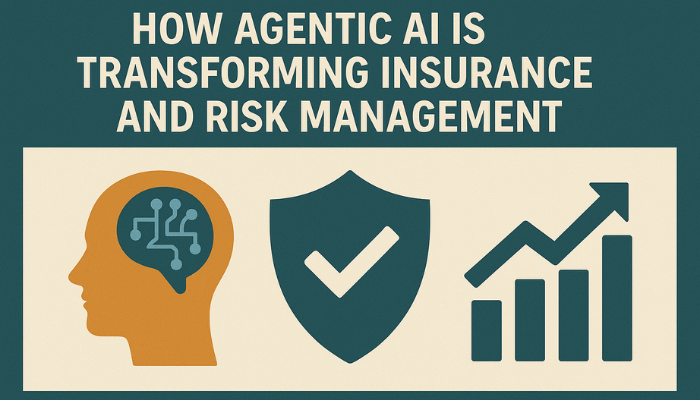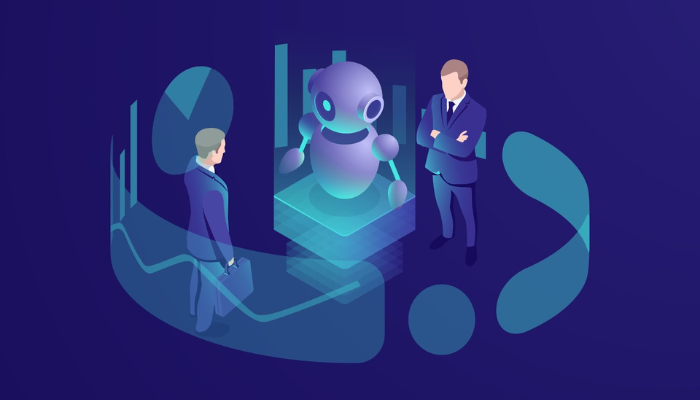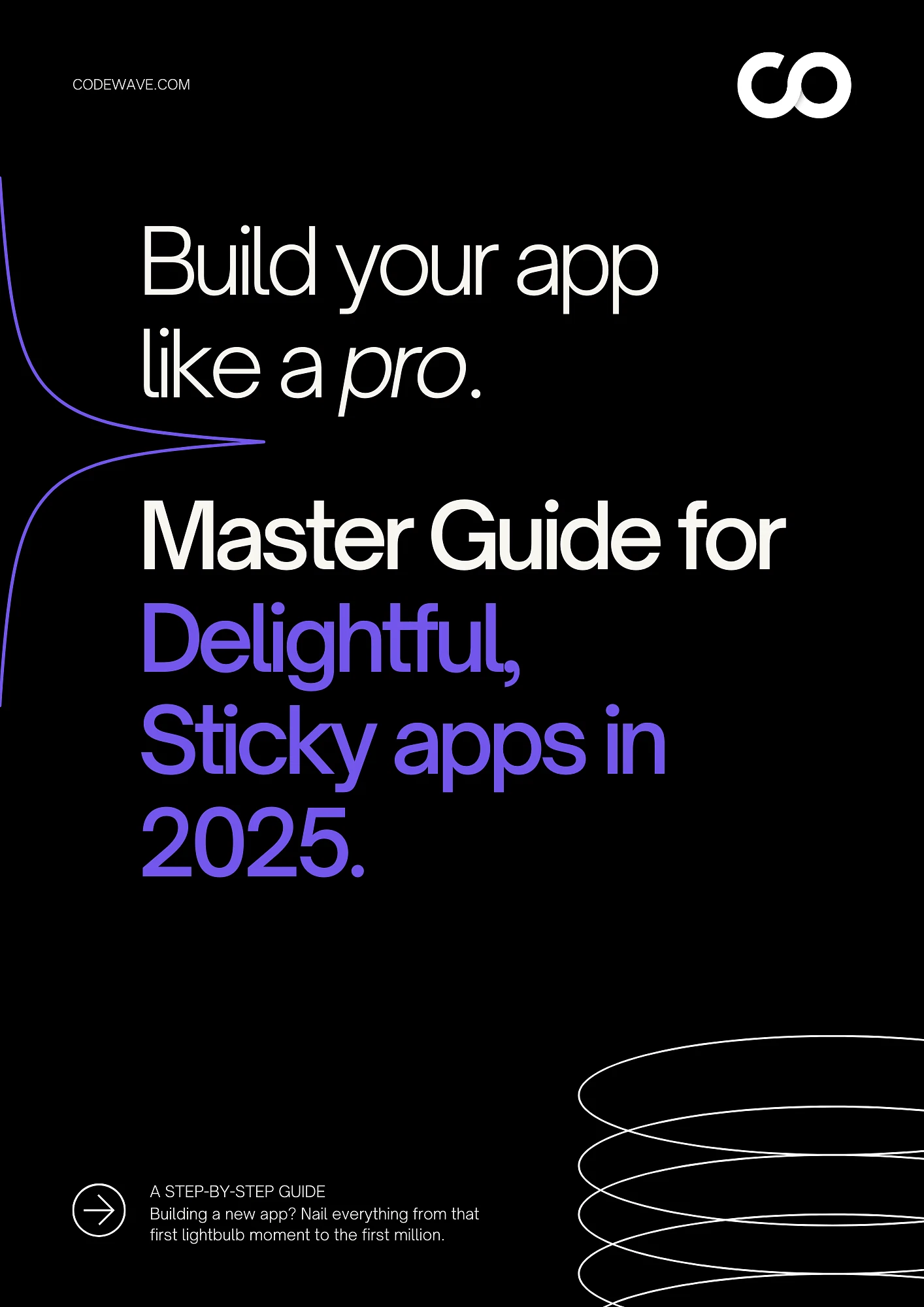In the insurance world, every second matters. Delays in handling claims, checking risks, or stopping fraud can lead to lost money and lost customers. With business getting more complicated and customer needs growing, old systems just aren’t enough anymore. This is where agentic AI makes a big difference. It’s built to think, act, and learn on its own, helping insurance teams work faster, make better decisions, and handle problems before they grow.
We understand that navigating the fast-evolving world of AI can feel daunting, especially when you’re responsible for steering your company’s growth, technological innovation, and customer satisfaction all at once.
And this shift is already underway. The U.S. enterprise agentic AI market was worth $769.5 million in 2024 and is expected to grow at a fast rate of 43.6% every year from 2025 to 2030. This growth shows that companies aren’t just using agentic AI for automation, they’re using it to make smart, real-time choices that improve results.
In this blog, you’ll explore how agentic AI in insurance is transforming daily operations and driving better results. We’ll explain what agentic AI means in insurance and how it improves risk management. You’ll also learn about challenges, best practices, and where this technology is headed next.
What Is Agentic AI in Insurance?
Agentic AI in insurance refers to advanced artificial intelligence systems that can make independent decisions, take action without waiting for instructions, and adapt based on real-time data. Unlike traditional AI, which follows fixed rules or requires constant human input, agentic AI operates more like a digital agent; it can observe, analyze, learn, and act independently to achieve specific goals. This makes it highly valuable in fast-moving, high-stakes environments like insurance, where timing, accuracy, and adaptability are critical.
Ready to Modernize Policy Management?
Book a callto discover how Codewave can design and build a custom policy administration solution tailored to your unique workflows, improving compliance, efficiency, and user experience across your organization.
Also Read: Top Trends Defining Agentic AI in 2025 for Businesses
Now that you know what agentic AI is, let’s look at how it’s making risk management smarter, faster, and more adaptive in the insurance industry.
How Agentic AI Enhances Risk Management in Insurance
The following are some of the ways agentic AI is making risk management in insurance smarter, faster, and truly proactive:
1. Real-Time Risk Insights
Traditional risk models often rely on static data or retrospective analysis. This creates blind spots and delays that can result in significant financial losses. Agentic AI eliminates these lags by leveraging live data streams from IoT sensors, telematics, environmental feeds, customer interactions, and more.
For example, in auto insurance, AI agents can monitor driving behavior in real time and detect risky patterns, like sudden braking or speeding in hazardous areas. In property insurance, it can pull live weather and geolocation data to assess storm exposure before damage occurs. This lets you act before the event, not after it, giving your business a first-mover advantage in risk prevention.
2. Smarter, More Contextual Risk Evaluation
One of the most valuable strengths of agentic AI is its ability to process and understand both structured (e.g., claim histories, policy data) and unstructured data (e.g., emails, social media, audio transcripts). It goes beyond surface-level analysis to uncover deeper correlations, hidden risks, and subtle trends.
This means risk assessments are no longer generalized or limited by historical averages. You can evaluate each policyholder with greater context and specificity. Whether underwriting a high-value commercial property or pricing a dynamic usage-based policy, the AI builds a multidimensional risk profile that reflects real-world behaviors, exposures, and business contexts.
3. Continuous Learning and Model Adaptation
Unlike traditional systems that require scheduled model updates or manual rule changes, agentic AI evolves constantly. Every new claim, market shift, regulatory update, or customer action feeds into its learning loop, fine-tuning algorithms on the fly.
This ensures that your risk models remain current, adaptive, and aligned with changing business realities. For instance, if new fraud patterns emerge or climate-related risks increase in certain regions, the AI picks up these signals and updates risk thresholds immediately, no need to wait for quarterly reviews or analyst intervention.
4. Proactive, Automated Response to Risk
Agentic AI does more than analyze risks, it acts on them. It can recommend decisions or directly automate actions like adjusting premiums, updating underwriting terms, or sending alerts to risk teams.
Imagine a scenario where AI identifies increased fire risk at a commercial property due to surrounding construction. It can instantly suggest coverage adjustments, notify the client, and initiate preventive inspections. These micro-interventions at scale can dramatically reduce claim frequency and loss ratios over time.
5. Fraud Detection and Regulatory Compliance
Insurance fraud costs billions annually and erodes customer trust. Agentic AI combats this with advanced pattern recognition, anomaly detection, and behavioral analytics. It can detect inconsistent narratives, suspicious claim timing, duplicate entries, or unusual transaction sequences far faster than manual review.
It also supports regulatory compliance by monitoring policy activities and market rules in real time. Whether it’s state-specific insurance mandates, solvency regulations, or data privacy rules, agentic AI helps maintain compliance without stretching internal compliance teams thin.
6. Built for Scale and Efficiency
As data volumes grow, so do the complexities of managing risk manually. Agentic AI scales seamlessly with your business. It handles complex data inputs, high-frequency risk scenarios, and multichannel interactions without increasing your operational overhead.
By automating repetitive risk tasks, like first-pass claim evaluations, customer risk scoring, or portfolio risk aggregation, you free up your team to focus on strategic decisions, product innovation, and customer engagement. It’s a cost-efficient way to build resilience into your business model.
Want to Detect Fraud Before It Happens?
Schedule a Consultation and see how our blockchain-powered fraud prevention tools and real-time analytics can help reduce risk, protect profits, and enhance trust with your policyholders.
Also Read: The Best Agentic AI Frameworks and Tools
Of course, even the smartest AI systems come with their own set of hurdles. Before adopting agentic AI, it’s important to understand the key roadblocks that can impact your success.
Major Challenges in Implementing Agentic AI in Insurance
While agentic AI offers huge potential for transforming insurance, putting it into action isn’t without hurdles. The shift requires thoughtful planning, the right resources, and a clear understanding of the roadblocks that may arise. Here are the key challenges you should be prepared for:
1. High Upfront Costs and Complex Integration
Getting started with agentic AI often comes with a hefty investment. You’ll need advanced tech infrastructure, skilled talent, and the right platforms to support intelligent agents. But the bigger challenge lies in integration.
Connecting AI systems with your existing legacy tools, many of which may be outdated, can be slow and messy. If not handled well, it can disrupt day-to-day operations. Add in the ongoing costs of updates, system maintenance, and tuning, and it may take a while before you see strong ROI.
2. Limited Transparency and Explainability
One of the trickiest parts of agentic AI is that it makes decisions on its own, and not every action is easy to explain. If a claim is denied or a policy is adjusted, it can be hard to trace the exact reasoning behind the AI’s move. This lack of clarity makes it harder to satisfy regulators or build customer trust.
3. Ethical and Operational Risks
More autonomy means more responsibility. Agentic AI can unintentionally make decisions that impact customer experience, fairness, or ethical standards. Bias in data or logic can lead to unfair claim rejections or inconsistent pricing. That’s why clear policies for governance, accountability, and human oversight are non-negotiable. You need to ensure that AI supports, not replaces, human judgment where it matters.
4. Data Quality and Integration Gaps
Agentic AI only works as well as the data it receives. If your systems feed in outdated, inaccurate, or incomplete information, your AI outcomes will be unreliable. This is especially tricky when data comes from multiple sources, like legacy software, third-party platforms, or IoT devices.
5. Change Management and Team Alignment
Introducing AI doesn’t just change technology; it changes people’s roles and workflows. Teams used to traditional processes might resist the shift, especially if they don’t fully understand what the technology is doing. Upskilling staff and creating a culture that embraces AI is essential. Everything, from operations to IT, needs to know how agentic AI fits into their daily work and long-term goals.
6. Scaling and Sustaining Long-Term Use
Once agentic AI is in place, scaling it across departments or product lines brings a new layer of complexity. You’ll face questions around consistency, performance, and support as the system grows. Regular monitoring, timely updates, and clear alignment with business goals are key to keeping it effective and relevant over time.
Are you looking to Build Smarter Claims Systems?
Contact Us Today to discover how Codewave’s AI/ML-led claims digitization solutions can cut down settlement time, reduce operational costs, and improve customer satisfaction from day one.
Also Read: Agentic AI vs AI Agents: Key Differences Explained
Yes, the road to adopting agentic AI comes with hurdles, but the key lies in how you approach them. Let’s look at some ways to implement it smoothly and successfully.
Best Practices for Adopting Agentic AI in Insurance
Successfully adopting agentic AI in insurance requires more than just installing new software; it’s about building a solid foundation, setting clear goals, and ensuring your team is prepared for a long-term shift. Here is how to approach it strategically:
1. Start with Clear Goals
Agentic AI can do a lot, but it works best when it’s focused on solving specific problems.
How to apply it:
- Identify the exact business problems you want to solve. For example, do you want to process claims faster, improve underwriting, or catch fraud early?
- Make sure these goals support your company’s overall strategy, so the results matter to your bottom line.
2. Focus on Quality Data
AI systems rely heavily on data. If the data is messy, outdated, or incomplete, your AI will give poor results.
How to apply it:
- Collect data from reliable sources like your internal systems, IoT devices, and customer interactions.
- Make sure your data is clean, free of errors, duplicates, and missing values.
- Integrate data from different systems into one central place, so the AI has a complete picture to learn from.
- Regularly update your data to keep it fresh and useful.
3. Keep Compliance and Security in Check
Insurance involves sensitive customer data. If that data isn’t protected, it can lead to breaches, legal problems, and loss of trust.
How to apply it:
- Use strong security tools, like encryption and access controls, to protect data.
- Follow all relevant privacy laws (like HIPAA, GDPR, and state regulations) to avoid penalties.
- Apply privacy-focused methods like anonymization (removing personally identifiable details) and federated learning (keeping data secure while training AI).
4. Start Automation Where It Matters Most
Trying to automate everything at once can be overwhelming and risky. It’s better to begin where you’ll see quick, meaningful results.
How to apply it:
- Start with areas that have high impact and are easy to automate, like claims processing, fraud detection, or policy underwriting.
- Use agentic AI to automate steps like document checks, claim reviews, or detecting suspicious patterns.
- Measure results and expand to other processes once you see success.
5. Make AI and People Work Together
AI is powerful, but it can’t replace human judgment, especially in complex or emotional situations.
How to apply it:
- Let AI handle repetitive tasks, data analysis, and pattern recognition.
- Allow your team to focus on tasks that require critical thinking, empathy, or personal communication.
- Build workflows where humans can step in and make decisions when needed. This creates a strong partnership between people and machines.
6. Choose Tools That Can Grow with You
Your business will evolve, and your AI tools should be able to keep up without needing a full rebuild.
How to apply it:
- Choose flexible, cloud-based AI platforms that can easily scale and update.
- Use modular solutions that allow you to add features over time as your needs change.
- Make sure the platform can integrate smoothly with your current systems.
7. Monitor and Improve Regularly
AI systems need ongoing monitoring to stay effective. If left alone, their performance can drop over time.
How to apply it:
- Set up real-time dashboards to track how well your AI is working.
- Review its decisions regularly to make sure they’re fair, accurate, and aligned with your goals.
- Retrain your AI with fresh data as needed, especially when regulations change or customer behavior shifts.
8. Keep Customer Experience a Priority
Agentic AI isn’t just about saving time or money; it should also make your customers’ lives easier.
How to apply it:
- Use AI to provide faster service, such as instant claim updates or on-demand policy support.
- Offer personalized policy recommendations based on customer behavior and needs.
- Add AI-powered chatbots or virtual assistants to guide customers through claims or renewals, giving them faster and smoother service.
9. Prepare and Train Your Team
Technology can only go so far if your team isn’t ready to work with it. Upskilling is key to long-term success.
How to apply it:
- Provide training on how the AI works and how to use its tools.
- Help teams understand how their roles will change and what new opportunities AI creates.
- Encourage an open mindset, so employees view AI as a partner, not a threat.
10. Start Small, Then Scale
A small, successful start gives you valuable lessons and builds confidence in your team and leadership.
How to apply it:
- Run a pilot project in one department or process.
- Track the results carefully, what worked, what didn’t, and what could improve.
- Once you see positive outcomes, use that momentum to expand AI adoption across other parts of your business.
Also Read: Understanding AI Agents: A Comprehensive Guide
Getting started the right way is key, but staying ahead means understanding what’s around the corner.
Future Outlook of Agentic AI in Insurance
Agentic AI is expected to do much more than just automate tasks. It’s moving toward becoming a smart, goal-oriented system that makes decisions with little to no supervision. Here’s how it’s shaping the future of insurance:
1. Personalized and Competitive Pricing
Smarter AI means smarter pricing. With better data and real-time insights, premiums can be adjusted on the fly. You’ll be able to offer fair, customized rates based on a customer’s unique behavior or risk level, keeping your pricing both competitive in the market and aligned with individual risk.
2. Fully Automated Claims Processing
Expect faster claims from start to finish. Agentic AI can review documents, check policy details, assess damages, and even approve basic claims automatically. This speeds up the process, improves accuracy, and gives your team more time to focus on complex or high-value cases, improving customer experience and cutting operational delays.
3. Proactive Fraud Detection
Rather than waiting for fraud to be reported, agentic AI continuously scans for unusual patterns and behaviors across the system. It flags issues early, preventing fraudulent claims from going through. This helps protect your bottom line while also keeping premiums fair for honest customers.
4. Strategic Portfolio Optimization
You’ll be able to fine-tune your risk portfolio in real time. Agentic AI can spot underperforming products, flag new risk trends, and recommend adjustments that keep your offerings relevant and profitable. This helps you stay ahead of market shifts and make better long-term decisions.
The path forward is clear, but it takes the right tools and expertise to get there. Codewave brings both to the table for forward-thinking insurers.
Why Codewave Is the Right Partner for Agentic AI in Insurance
Adopting agentic AI in insurance takes more than just advanced tools, it requires a technology partner who understands the industry inside and out. That’s where Codewavesteps in. We work closely with insurers to modernize core systems, automate operations, and build future-ready AI-driven platforms that align with both regulatory needs and business goals.
Here is how Codewave supports insurers with custom agentic AI and digital solutions:
- Claims Digitization & Automation: Our AI/ML-powered systems speed up claims intake, assessment, and settlement, reducing manual work and turnaround time.
- End-to-End Insurance Software Development: From idea to execution, we deliver full-cycle technology solutions that support everything from customer engagement to internal operations.
- Fraud Detection and Prevention: We design secure, blockchain-based systems to identify, track, and prevent fraudulent activities in real time.
- Custom Policy Management Systems: We build personalized insurance policy platforms tailored to your workflows, ensuring better control, visibility, and policyholder experience.
- Regulatory Compliance Automation: Automate the handling of legal requirements with digitized, audit-ready processes that stay aligned with changing laws.
- Peer-to-Peer Insurance Platforms: Launch innovative P2P insurance models with robust backends, smart contracts, and intuitive interfaces.
- Exposure Management Tools: Our software helps you assess and manage exposure across different risk categories with AI-driven insights.
- Agent, Broker & Policy Seller Apps: We create easy-to-use mobile and web apps for field teams, making sales, onboarding, and servicing more efficient.
- Advanced Data Analytics: Use intelligent dashboards and predictive models to gain insights from customer data, improve underwriting, and forecast market trends.
Ready to Build Smarter Insurance Systems with Agentic AI?
Let’s talk about how Codewave can help you transform policy management, claims processing, and fraud prevention with powerful, AI-driven solutions. Reach out to us today!
Codewave is a UX first design thinking & digital transformation services company, designing & engineering innovative mobile apps, cloud, & edge solutions.







